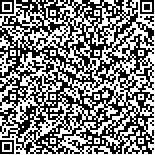| 摘要: |
| 【目的】分析北京市首都功能核心区主要绿化树种国槐的健康状况及其影响因素,为管护技术措施的制定提供科学依据。【方法】基于树木健康一级和二级诊断法,对生长在北京首都功能核心区内主要街道、胡同、绿地区域的国槐进行每木调查,采用主成分分析、聚类分析、判别分析3种方法建立健康评价模型;在此基础上,从生长因素(胸径、冠幅)、管护措施(修剪方法、防踩铺装)、环境因子(与设施距离、遮荫情况)3个方面,进行国槐单株的健康评价,分析不同因素对国槐林木健康状况的影响。【结果】在研究区内的31 475株国槐中,健康单株占12.81%,亚健康单株占82.03%,不健康单株占5.16%。街道、胡同、绿地3个区域内的健康、亚健康、不健康3个等级的国槐数量均呈正态分布。生长在绿地区域的国槐健康状况较好;不健康国槐单株受害等级评价中,1级占29.51%,2级占36.97%,3级占23.66%,濒死占9.86%。方差分析和多重比较表明,胸径、冠幅、防踩铺装、修剪方法、与设施距离对国槐健康的影响均达到显著水平(P<0.05),遮荫情况对国槐健康无显著影响。核心区内国槐的健康综合得分随胸径和冠幅增大而总体下降,在有机材料覆盖、修剪规范、与设施距离≥2~<4 m、无遮荫条件下健康状况较好。【结论】北京首都功能核心区的国槐整体表现为健康和亚健康状态,具有良好保育养护潜力,但部分不健康国槐受害严重,亟需处理。在国槐树木基部覆盖有机材料、规范修枝技术、确保与设施的栽植距离≥2 m和无遮荫,是国槐养护管理以促进其健康生长的重要措施。 |
| 关键词: 国槐 首都功能核心区 树木健康二级诊断 树木健康评价 主成分分析 |
| DOI: |
| 分类号: |
| 基金项目:北京市园林绿化局科技创新工程项目“北京10种主要园林绿化常见问题及增彩延绿”(CEG-2018-01) |
|
| Health evaluation and influencing factors of Sophora japonica in the capital functional core area of Beijing |
|
LI Jiahui,PENG Zuodeng,LIU Yong,et al
|
| Abstract: |
| 【Objective】This study analyzed the health status of main greening tree species Sophora japonica and influencing factors in the functional core area of Beijing to provide basis for management and protection technical measures.【Method】Based on the tree health primary and secondary diagnosis method,a tree-by-tree survey was conducted on S. japonica plants in the main streets,alleys,and green areas in the functional core area of Beijing.Principal component analysis,cluster analysis and discriminant analysis were adopted to establish health evaluation model.Then,the S. japonica health was evaluated based on growth factors (DBH and crown width),management and protection measures (pruning and anti-stepping pavement),and environmental factors (distance from facilities and shading),and the influence of different factors was analyzed.【Result】Healthy S. japonica plants accounted for 12.81%,sub healthy individual plants accounted for 82.03%,and unhealthy individual plants accounted for 5.16%.The number of S. japonica in the three levels in 3 regions was in normal distribution.The damage level of unhealthy plants was 29.51% at first level,36.97% at second level,23.66% at third level,and 9.86% at dying.Analysis of variance and multiple comparisons showed that DBH,crown width,anti-stepping pavement,pruning methods,and distance from facilities had significant effects on S. japonica’s health (P<0.05).Shade cases had no significant effect.The health score of S. japonica in core area decreased with the increase of diameter at DBH and crown,and health condition was better under the conditions of organic material covering,pruning specifications,≥2-<4 m away from facilities and without shading.【Conclusion】The S. japonica plants in Beijing capital functional core area were healthy and sub-healthy with good conservation potential,but some unhealthy plants were severely damaged and needed to be treated urgently.Covering organic materials at the base,standardizing pruning techniques,ensuring planting ≥2 m away from facilities and no shading were important measures for S. japonica. |
| Key words: Sophora japonica capital functional core area tree health secondary diagnosis tree health evaluation principal component analysis |


